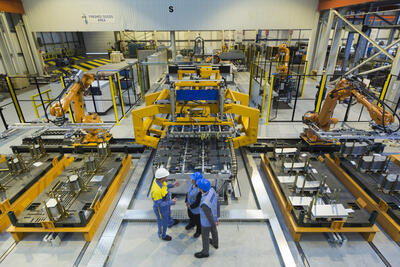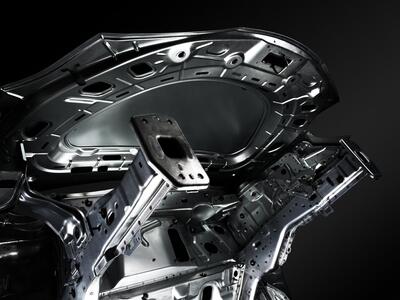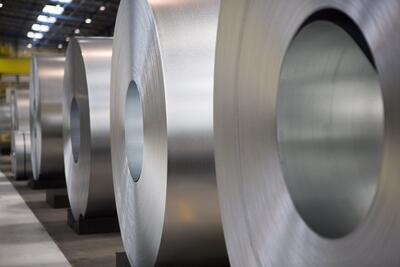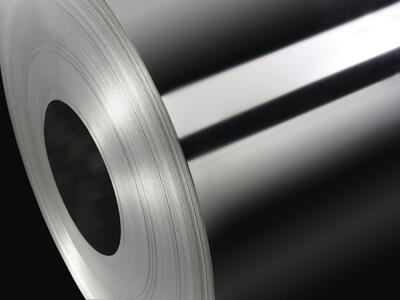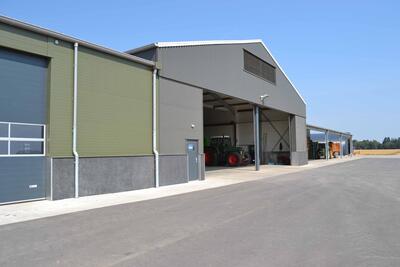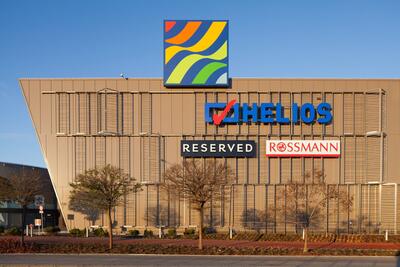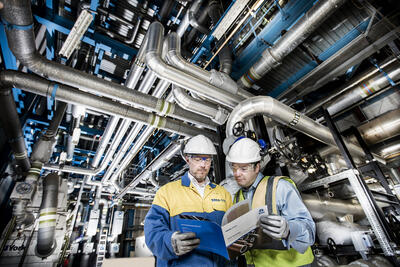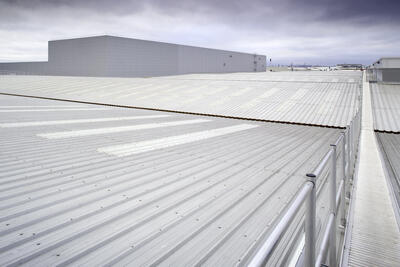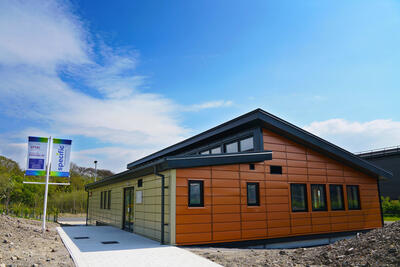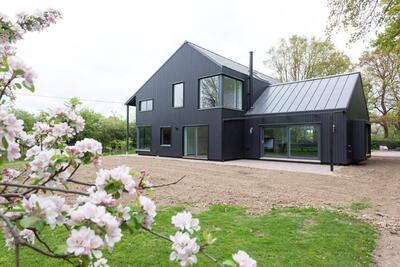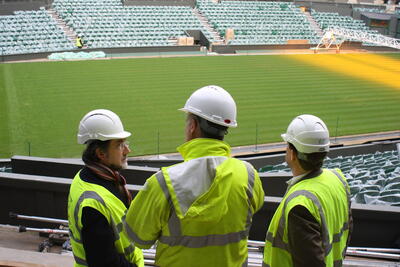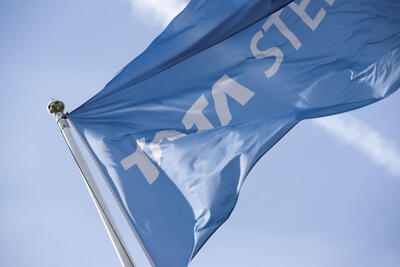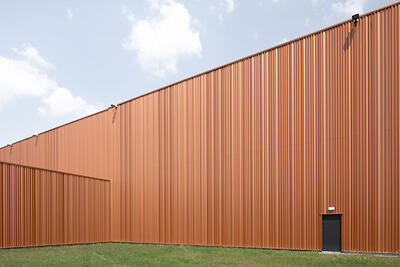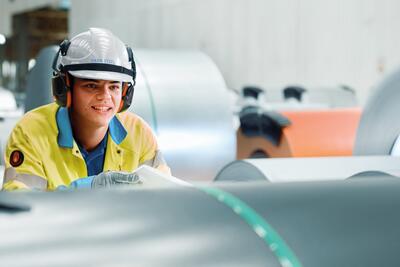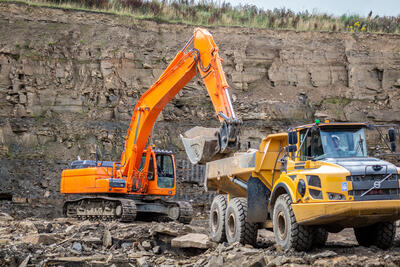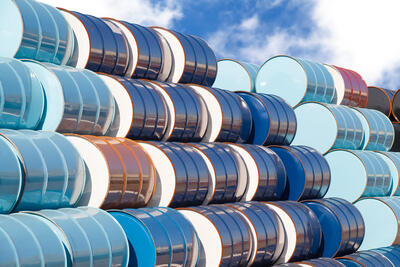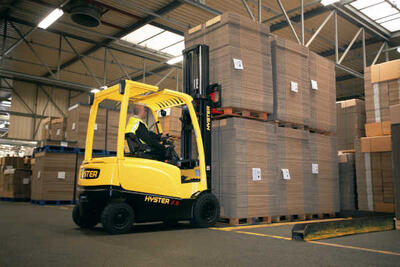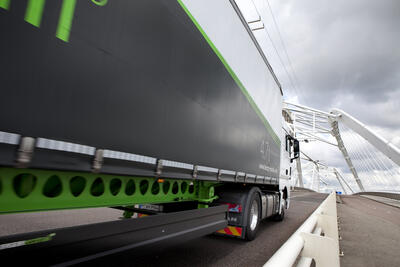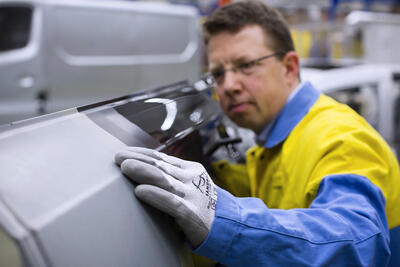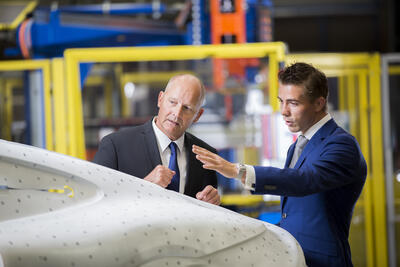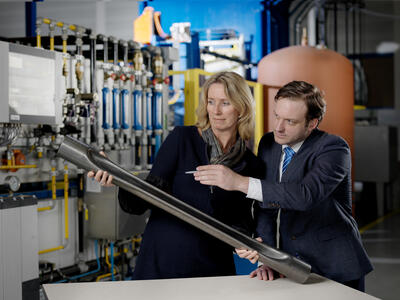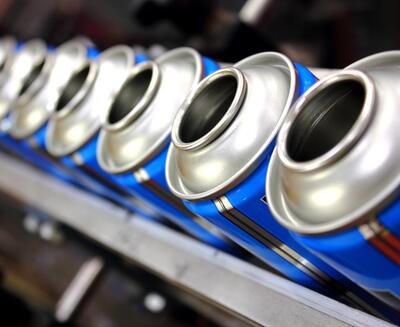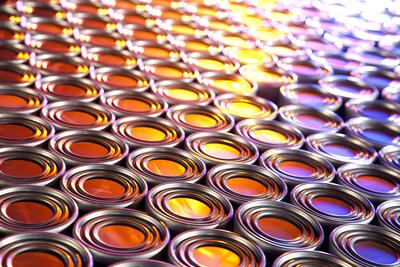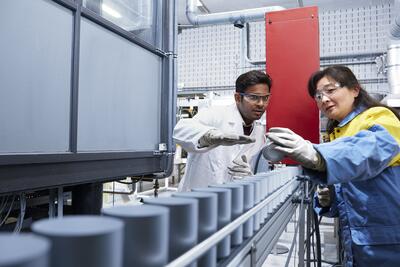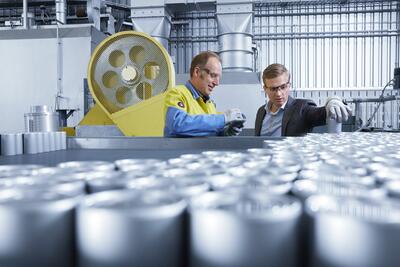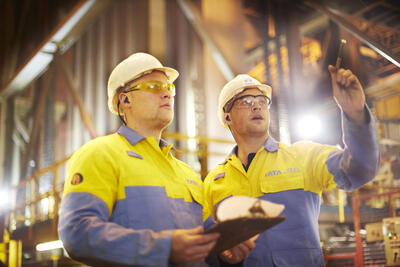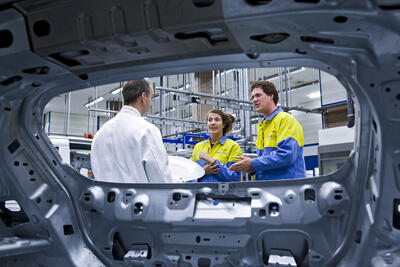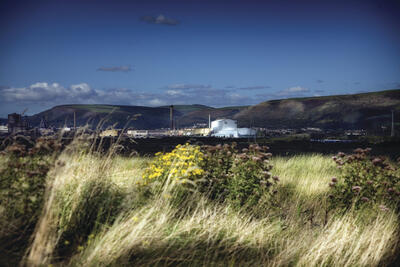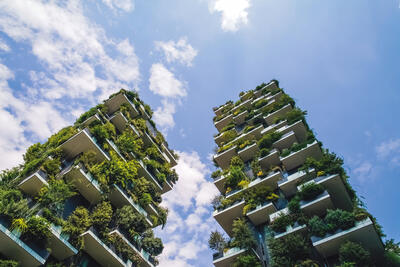Tata Steel’s Director Sustainability, Pete Quinn talks about the challenges of positively promoting a £1.25 billion investment programme that will reduce the Port Talbot steelworks’ carbon emissions by 90%, while not laying oneself open to accusations of greenwashing.
Fine words butter no parsnips’ was a phrase my parents used a lot.
The basic premise is that whatever words you might use to describe something, in themself those words don’t deliver any tangible benefits.
So the challenge around using the phrase ‘green steel’ is that it may be seen to amount to no more than a hill of beans if there isn’t evidence that the steel being made is actually less impactful on the environment.
(That is if we make the broad assumption that in most people’s minds the word ‘green’ is synonymous with the environment – which may have to be the subject of a separate blog!)
Of course, inevitably, the case is not black and white – more, shades of grey.
Or shades of green, even…
Because ‘green’ in environmental terms can seem quite definitive – it suggests something is either green or not green.
But in the world of steel, there isn’t yet an accepted definition of what exactly IS ‘green’.
And many people would argue that green means much more than low CO2.
It should mean low emission and low carbon footprint manufacturing; high recycled content, embedded in a circular economy. It should mean ethical sourcing, low product-in-use impact, local supply chains of responsible employers, supporting local communities…
Yes - blimey!
The debate inside our industry about the use of the term ‘green steel’ stirs many emotions: we are an industry that traditionally revels in hand-wringing and self-doubt when it comes to singing from the rooftops about our achievements or the brilliance of steel as a material compared with most others.
And in our industry—whichever way you make steel—it still consumes a huge amount of energy.
So green credentials become not only a marker on a sliding scale, they are also positioned comparatively with other materials, or to other product solutions.
We would argue that the most recycled material in the world (steel) is always going to be ‘greener’ that materials that use more energy to make or are less easy to recycle, for example.
So, to be (green steel) or not to be – that is the question.
A colleague of mine always repeats the adage: “Don’t let the facts get in the way of a good story” (of course, he means detail rather than facts).
And I kind of know what he means - there is huge value is keeping complex stuff simple.
So when you think about how we might promote our new Electric Arc Furnace, scrap-based, low-CO2 / low-emission / low-carbon-footprint steelmaking – or however we might choose to most accurately describe it – it’s always going to be a massive simplification.
And any attempt to find a comfortable middle ground is fraught with difficulties.
We could, for example, say “Green-er steel.”
The obvious retort is: “Greener than what?”
Greener than we made it before?
Certainly true.
Greener that steel made through blast furnaces?
True.
Greener than other materials because steel can be easily and endlessly recycled back into the same products?
Yep, pretty much.
But the rub comes when someone says “How much greener?”
Because 1% less carbon emissions would be greener…
…but I think we can all agree, that would be pretty underwhelming – even if it would equate to around 60,000 tonnes of CO2 a year from our site alone!
I wonder how many other brands or companies would wrap themselves up in such linguistic complexities?
Imagine Gillette asking themselves – is our razor REALLY the best a man can get?
Or Disney hesitating about whether Disneyland is ACTUALLY the happiest place on earth.
And I am absolutely convinced that Red Bull doesn’t TRULY give you wings!
But industry is different.
Isn’t it?
We have to play by different rules.
Don’t we?
Well, it is certainly true that we cannot expect customers to buy something that isn’t what it’s claimed to be (although in the examples above, Gillette, Disney and Red Bull seem to do a pretty good job of it).
But without a specific definition of what green steel is—or isn’t—that becomes a more complex debate.
Is there a case to be made that while ‘green steel’ may not be specifically defined, a 90% reduction in CO2 emissions is probably enough for us to call our steels ‘green’?
No, we’re not sure either.
So where does that leave us?
Our dedicated website talking all things decarbonisation is www.greensteelfuture.com The beauty of the English language means you may read this as either a green future in steel, or a future in green steel.
Our commercial colleagues are keen to have their narrative focused on the products they will be selling, so are leaning towards low emission steel, low carbon-footprint steel, low CO2 steel, and low embodied-carbon steel. They might not be so catchy, but they are more technically robust.
And there is good news on the horizon.
A number of world-renowned organisations have recognized this complexity and the lack of definitions or standards around this, and the wider topic of sustainability and responsibility.
For example, Responsible Steel has a standard and criteria against which any organization can be certified. And that will be a holistic view of a responsible (and green) steelmaker. Then you’re either in or out.
Which might not come easy, but at least we’ll have something to aim for that we can all stand behind.
And our engineers can get on with building the biggest arc furnace in the world, our sales teams can get on with selling low CO2 steels (ahead of most of our competitors in Europe)…
…and our PR team can relax!
Pete
About Tata Steel UK
- The Tata Steel Group has been named one of the most ethical companies in the world, and is among the top producing global steel companies with an annual crude steel capacity of 34 million tonnes.
Tata Steel in the UK has the ambition to produce net-zero steel by 2045 at the latest, and to have reduced 30% of its CO2 emissions by 2030. - In October 2024, Tata Steel ceased ironmaking at its Port Talbot site and temporarily paused steelmaking pending the construction of a 3.2Mtpa Electric Arc Furnace, due to be commissioned late in 2027 / early 2028. For that period, the business will import slab and hot rolled coil to support manufacturing and distribution operations at sites across Wales, England and Northern Ireland as well as Norway, Sweden, France, Germany and UAE. It also benefits from a network of sales offices around the world.
- Throughout 2024 Tata Steel UK has been undergoing a restructuring that will reduce the size of its workforce to around 5000 direct employees, supplying high-quality steel products to demanding markets, including construction and infrastructure, automotive, packaging and engineering.
- Tata Steel Group is one of the world's most geographically-diversified steel producers, with operations and a commercial presence across the world.
- The group recorded a consolidated turnover of around US$26 billion in the financial year ending March 31, 2025.



